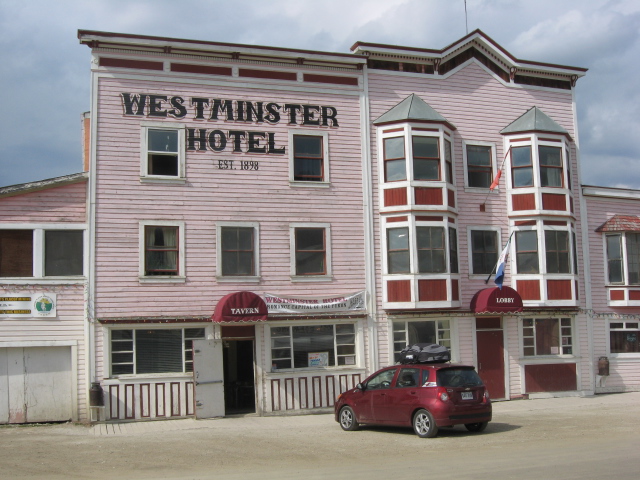
Welcome to the Gold Rush of 1899
Updated Apr 2022
Dawson City owns its existence as a direct result of the Klondike gold discovery in 1896 in the nearby creeks. Founded in 1897 and incorporated as a city in 1902. By 1898, the population was almost 40,000. It was the largest city west of Winnipeg and north of Seattle. Much larger than Vancouver or Edmonton or Calgary. It had telephone service and was one of the first cities in North America to have electricity. Dawson had running water starting in 1900. There were fancy balls and high society. Known as the “Paris of the North”, Dawson became the capital city of the Yukon.
But the gold rush did not last very long and by 1902 the population was down to 5,000.
Whitehorse was an unimportant village until the building of the Alaska Highway during the Second World War. Its main role before WWII was just a place to go to get the steamboat to Dawson. But once Whitehorse got road access, it grew in importance as Dawson shrunk. In 1952 the Yukon capital moved from Dawson to Whitehorse. The population of Dawson dropped to less than 1,000 people.
The government built a road from Whitehorse in 1955 and today Dawson is a centre of tourism. Previously, the only way to get to Dawson was by riverboat. The population has increased to about 1,300. The town is rich in history and it gets about 60,000 tourists per year. The huge increase in the price of gold has brought about a second rush of people and companies searching for it. There is still plenty of gold in the surrounding area.
Welcome to the Town of Dawson City
In the 1980’s the status of Dawson downgraded from city to town. However, a special provision allowed it to retain the name of Dawson City for historic reasons and also to differentiate it from Dawson Creek in British Columbia at the start of the Alaska Highway. Thus, the name “The Town of Dawson City”.
Reenact the Klondike Gold Rush – Part Five: Tour the City of Dawson.
If you were here in 1898, you would probably buy or build or rent a cabin or a tent in Dawson, although the prospectors lived much of the time in a tent or small cabin on their claim. You can reenact this part of the Klondike Gold Rush by spending a few days here. You can rent a cabin or a hotel room or camp in one of several campgrounds. Some people say that there is nothing to do in such a small place but the contrary is true. The area is full of National Historic Sites including the Dawson Historical Complex which encompasses the historic centre of the town. I spent more than a week here and never ran out of things to see and do.
Simulate your arrival in Dawson by going for a ride on a paddle-wheel steamer. The Klondike Spirit travels on short trips on the Yukon River, starting and ending in Dawson. The ship has paddles on the side. The vast majority of paddle-wheelers on the Yukon River had the paddle at the rear. Paddles on the side are susceptible to damage from collision with logs and other objects. (The Klondike Spirit is a recreation and not an original ship from the Gold Rush era).
Attractions – Dawson City
Banks
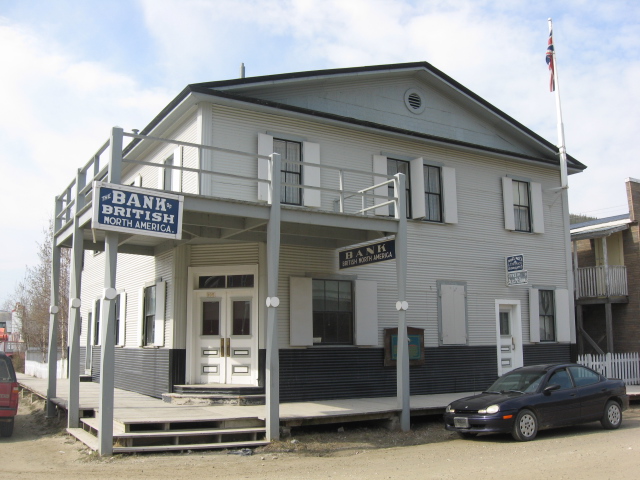
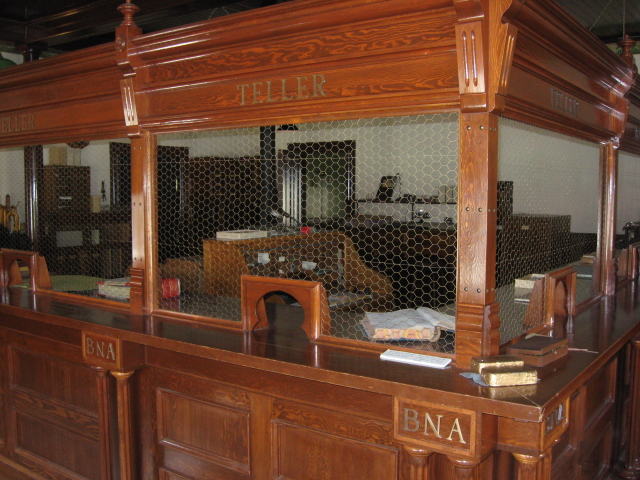
The Bank of British North America opened in 1898 in a tent. A log cabin soon replaced the tent, which burned down before it was very old. The present building opened in 1899. The Bank of Montreal took over the building in 1918, which closed in 1968. At that time it reverted back to the Bank of British North America as a historic site and is now operated by Parks Canada.
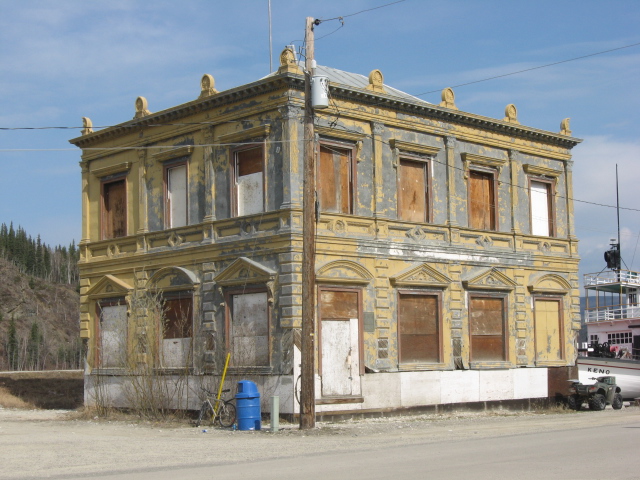
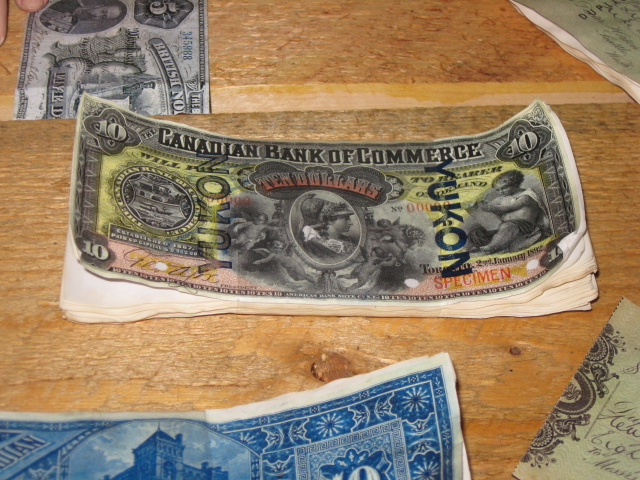
The only other bank in town was the Bank of Commerce which operated from a large brick building on the waterfront until 1988. This building is now derelict but the Bank of Commerce is still in operation and is the only bank in Dawson. There are plans to restore the building.
During the Klondike Gold Rush, few people had money but many people had gold. Every business had a set of scales to weigh both gold nuggets and dust. Gold was the normal method of payment for goods. If you wanted to buy a couple of beers, you would drop a bit of gold dust into the scale to pay for it. Gold was everywhere. After doing one man’s laundry, about $37 in gold dust appeared at the bottom of the washtub. When replacing the wooden sidewalks in the 1930s, thousands of dollars in gold was found underneath it.
The best way to get rich during the gold rush was not to search for gold, but to open an establishment and accept gold as payment. The owners of saloons, bars, gambling halls, restaurants, houses of prostitution and other establishments got rich without leaving town to search for gold in the mud.
In those days, banks such as the Bank of Commerce and the Bank of Montreal produced their own paper money. In Dawson, the bills were stamped with the word “Yukon” so that if they ever were stolen, they could not be used in other cities.
After 1902, gold dust was no longer accepted as payment for bills but could be converted to cash at the bank.
Post Office
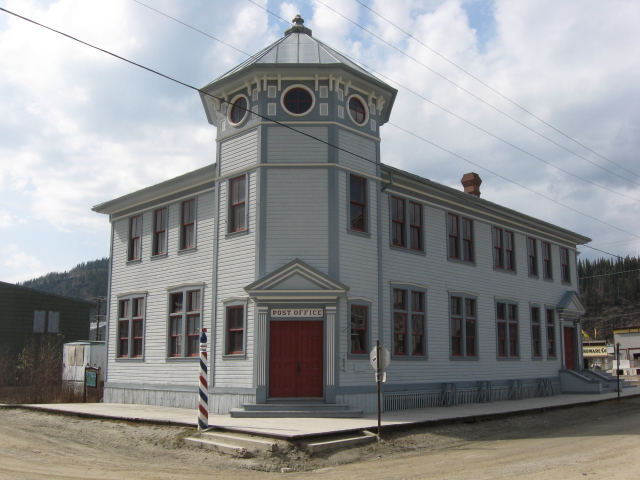
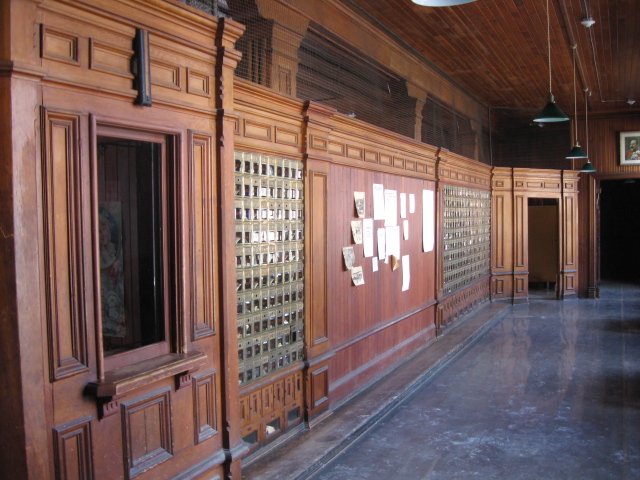
Built in 1900, the magnificent Post Office was not only functional but was also built to demonstrate the federal government’s commitment to the area. It was the first building in town to have running water. Electricity and Telephone were already operating before 1900.
Grand Palace Theatre
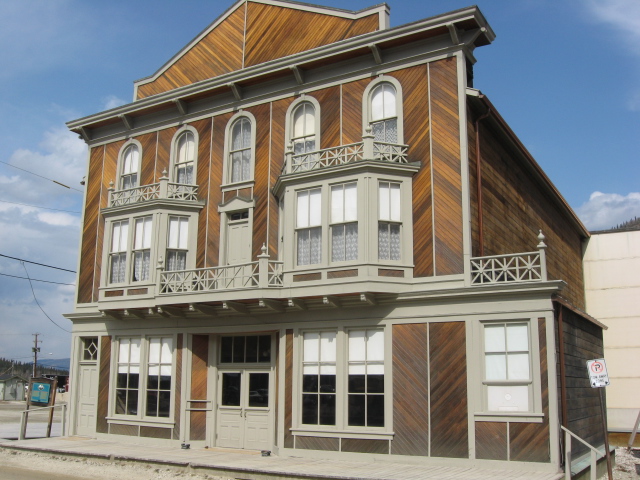
Built in 1899, the building has been totally rebuilt in recent years. It is still in use for concerts and receptions. There are live shows during July and August and the Commissioner’s Ball is held here. Buffy Sainte-Marie, The Bare-naked Ladies, Sylvia Tyson, Blue Rodeo and many others have performed here. The third floor houses rooms where the actors lived and have been refitted with period furniture.
Red Feather Saloon
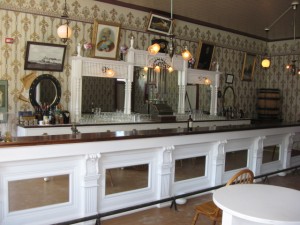
This was a saloon in the centre of town for the working-class people. It is totally restored and in beautiful condition.
Yukon Territory Government Building
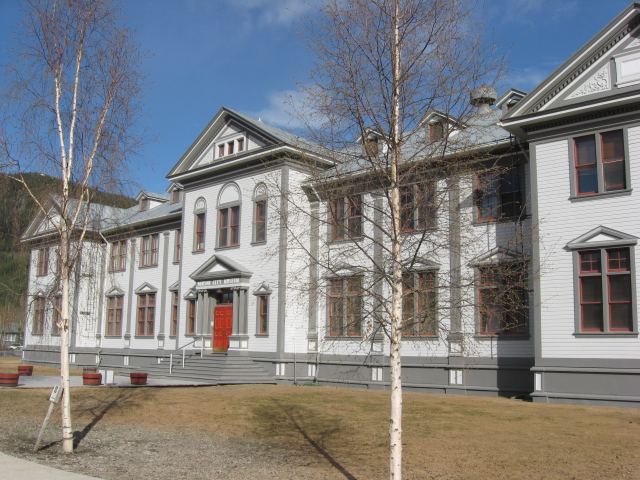
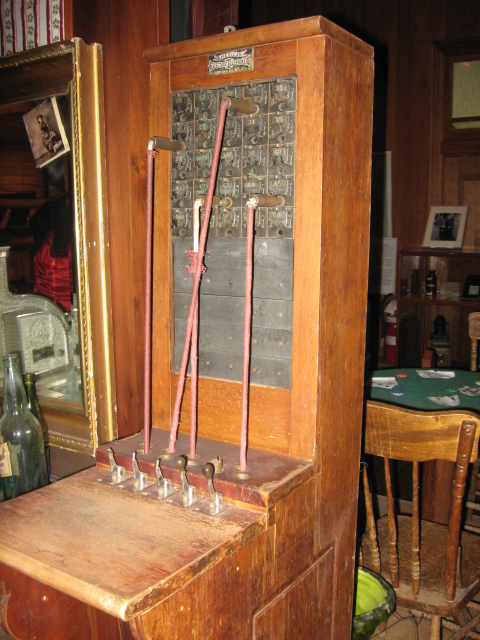
Built in 1901, this was the seat of government for the Yukon Territory until the capital moved to Whitehorse in 1952. Today it houses the Dawson City Museum. The museum has an excellent display and history of Dawson, the surrounding area, the original people who lived here and the Klondike Gold Rush. Well worth a visit. This impressive structure was built to demonstrate the government’s commitment to the area so people would know that civilization was here to stay and not just a temporary thing for the life of the gold rush.
Commissioner’s House
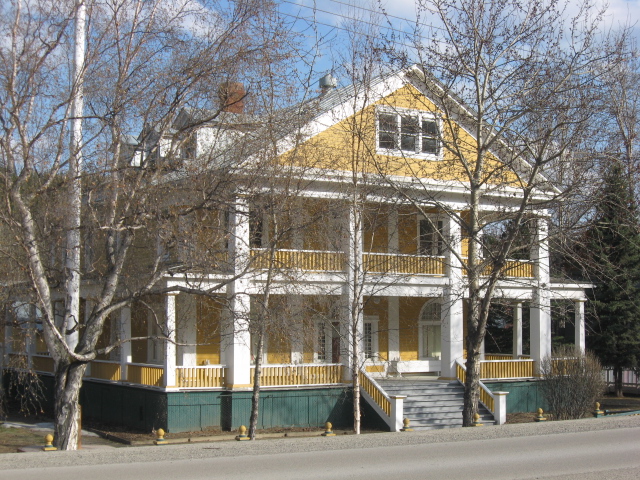
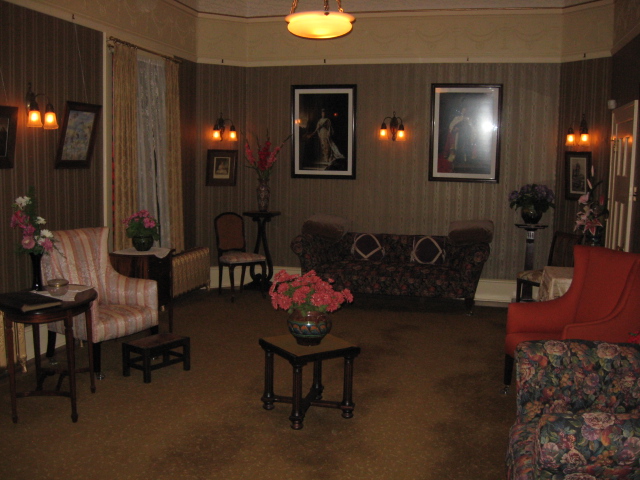
Built in 1901, this was the residence of the Commissioner who is the federal government’s representative in a territory that is not a province. It was last occupied in 1916. The current commissioner lives in Whitehorse. In 1916, all the contents of the building were put in storage. Using period photographs, the building is now restored to its original condition with many of the actual objects.
Fire Fighter’s Museum
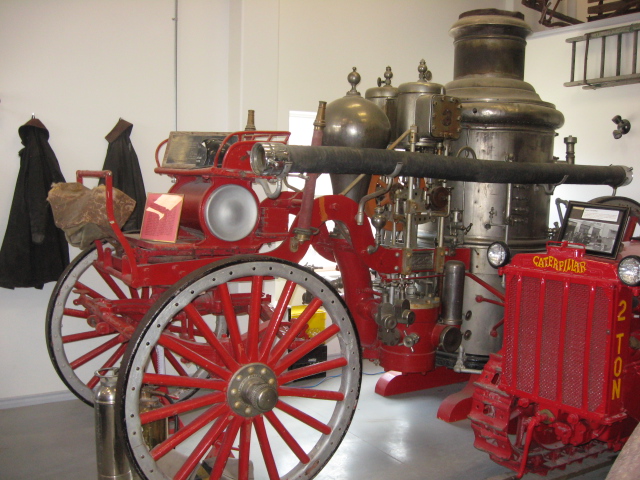

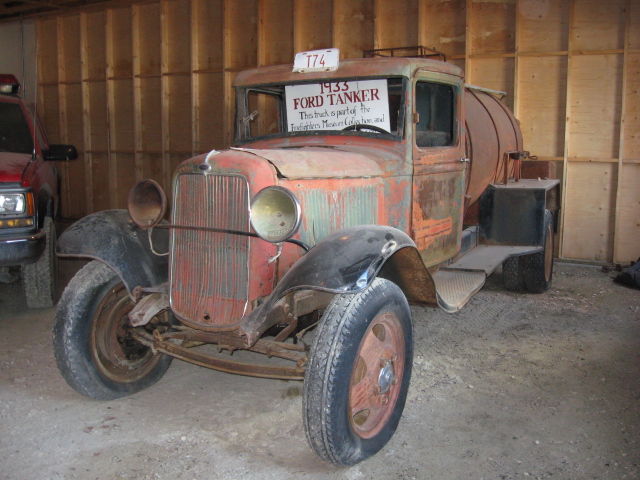
A great collection of old fire-fighting equipment and more than 115 years of fire-fighting history in Dawson is on display at the Dawson City Firehall. The collection includes two steam-powered fire engines dated 1897 and 1899. The water had to be kept warm at all times. You can’t put out a fire with frozen water. They also have a 1927 International, a 1933 Ford and a 1940 Ford. All except the 33 Ford are in running condition. Definitely worth a visit. There were several huge fires in Dawson in the early years due to the rows of wooden buildings heated by woodstoves.
Diamond Tooth Gerties
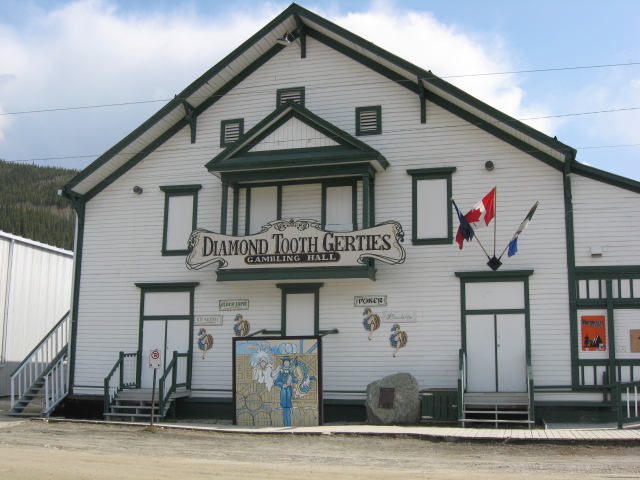
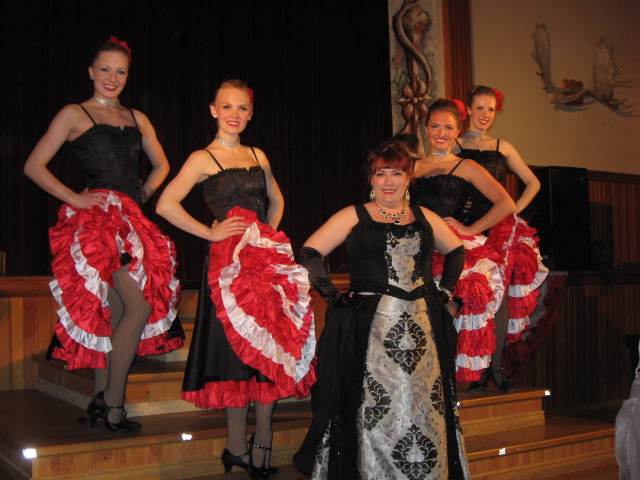
This was the first legal casino in Canada. It still operates as a casino and also has a great floor show featuring Diamond Tooth Gertie and her can-can girls. The original Gertie really had a diamond stud between her two front teeth.
The Dawson Daily News
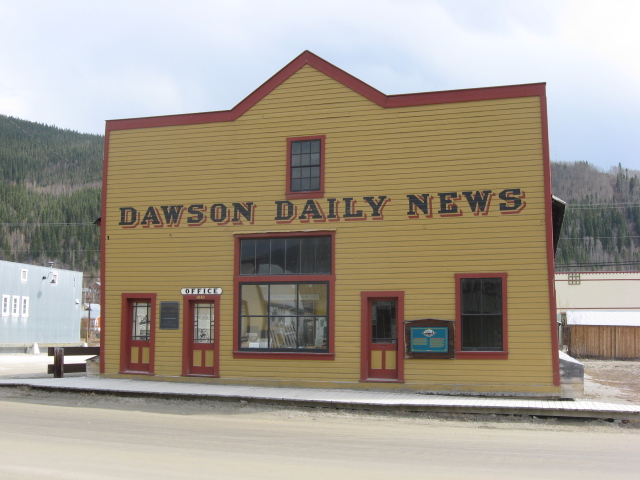
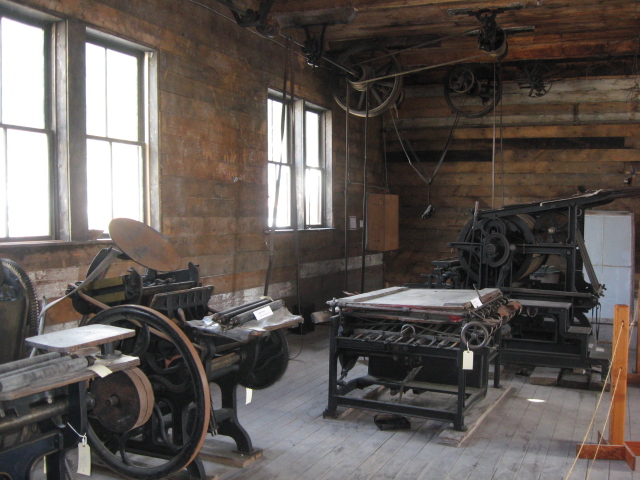
There were seven daily newspapers in Dawson in the early days. By 1910, the Dawson Daily News was the only one. It finally shut down in 1954. Today the old printing equipment is still in the building.
St. Andrew’s Presbyterian Church
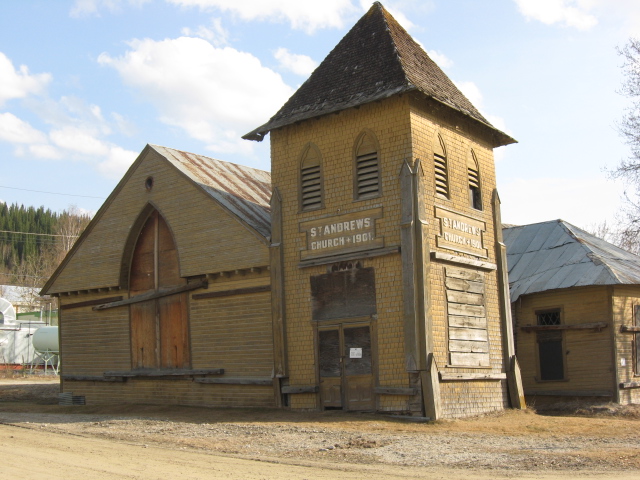
Built in 1901, the building is on the verge of falling down and is not safe to enter. However, it is an interesting building and worth walking past to see it and take a photo.
Other Old Buildings


There are several other interesting, old buildings in town. Especially the hotels. There is the NWMP jail, prostitute’s cabins behind Ruby’s place and many others. Within sight of each other are the homes of three famous authors – Robert Service, Pierre Burton and Jack London (the Service and Burton homes are original. The London cabin is a recreation).
Thank You
A big thank you to Dawson City Museum, Dawson City Fire Hall and Parks Canada for the tours and access to closed buildings. I appreciate it very much.
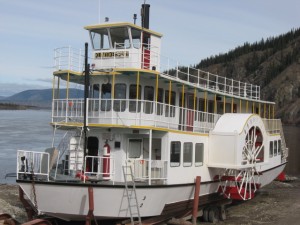
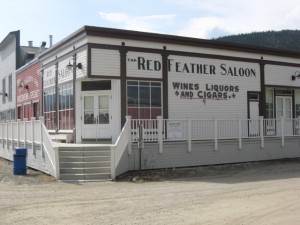
Hi good job of dawson articles. Glad to see you enjoyed it!! Janet